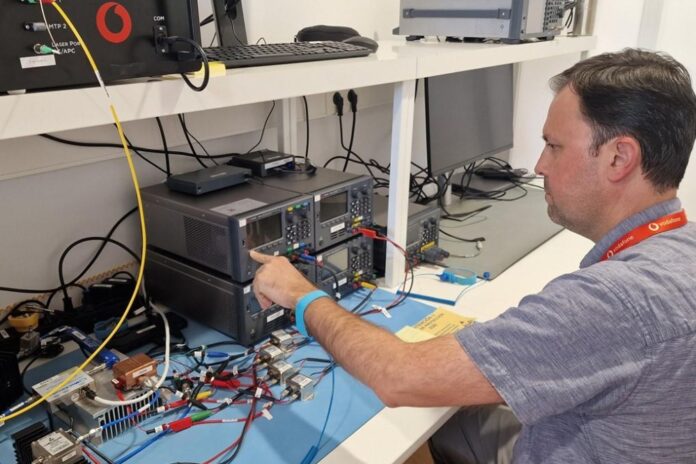The operator group has teamed up with i2CAT to help reach its target of having 30% of its masts in Europe using Open RAN by 2030
Vodafone and the i2CAT Foundation – a technology research centre – announced that they will use the improved automation offered by RAN jointly to build a responsive, multi-vendor management system. Its purpose will be to fix faults and respond to cyber threats faster and more cheaply.
The plan is to combine the strengths of i2CAT’s R&D in new digital technologies with Vodafone’s engineering expertise at its Innovation Centre in Málaga. They will use machine learning to manage and analyse logs from multi-vendor Open RAN. These logs provide vital information, such as successful login or failed access attempts, which can be used to improve security and detect threats.
The ultimate intention is that the system will provide Vodafone with a dashboard from which it can respond to and control Open RAN events over a big geographical area. This will support the company’s aim of having 30% of its masts across Europe using Open RAN technology by 2030.
Reducing operational costs
The management system should reduce operational costs by: automating the processing and analysis of multi-vendor logs; strengthening security by being able to quickly detect and mitigate threats across different suppliers; and simplifying compliance with appropriate regulations and industry standards.
The initial focus for Vodafone and i2CAT is on the design of a Security Information and Event Management system (SIEM) to flag potential security threats like unauthorised access, denial-of-service attacks, or man-in-the-middle interceptions.
Vodafone and i2CAT will test how to differentiate diverse types of logs, classify and manage them according to the specific threat. The intention is then to integrate the SIEM with the main Open RAN components, such as the RAN Intelligence Controller (RIC), which controls and optimises the radio access network functions.
The two organisations will also run proofs of concept (PoCs) that include log management of automated rApps, which are used for applications such as steering traffic or conserving energy.
The results of this collaborative project, named Holistic ORAN Logging & Metrics Security Shield (HOLMES), will be shared with the O-RAN Alliance to enable vendors to contribute and adopt new standardised approaches to log formats.
Vodafone is committed to working with leading academic and research institutions and for example, has worked with the University of Oxford to guard against risks arising from AI developments.
Francisco Martin, Head of Open RAN at Vodafone, said, “Vodafone’s partnership with i2CAT…will enable us to automate more manual tasks associated with traditional networks to respond even faster to fluctuations in demand, manage energy consumption more effectively, launch new features quicker and keep ahead of the ever-changing threat landscape.”
Not a moment too soon
Massimo Fatato, Head of Networks at NTT Data UK&I, commented, “Vodafone’s collaboration with the i2CAT Foundation is a key indication of the direction the industry is taking…towards the evolution of telecommunications infrastructure – and not a moment too soon.
“The development of an automated Open RAN management system is a fundamental component to fulfil Open RAN’s promise of interoperability and flexibility in the access network. It will be a critical enabler as we move towards more dynamic and resilient network architectures. It will also aid Vodafone immensely in having 30% of its masts using Open RAN technology by 2030.”
He continued, “We can see this as part of a larger movement towards intelligent, software-defined networking” and telcos’ need to cut costs. “Leveraging AI in automating the management of Open RAN will not only improve operational efficiency but also accelerate the deployment of new services and features, ensuring that networks can adapt quickly to changing demands.”



